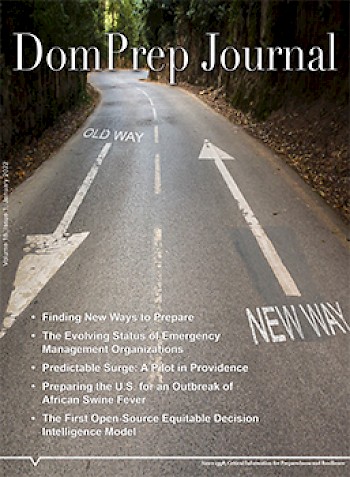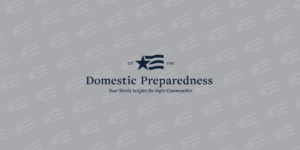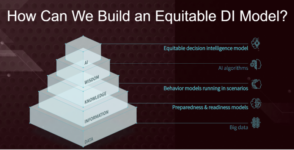

Predictable Surge: A Pilot in Providence
Sara Kelly
January 26, 2022
Collaboration between public entities and private companies is essential to prepare for disasters. However, current partnerships can be formal and cumbersome to the point of detriment, or impromptu and do little to achieve their goals. This unmet need to find appropriate partnership mechanisms could be addressed by the Harvard National Preparedness Leadership Initiative (NPLI)’s Predictable Surge framework, a model presented in Domestic Preparedness Journal in August 2019. It aims to inform an emergency manager’s understanding of the response ecosystem and productively engage potential private partners. This model has been further developed through a pilot with the Providence Emergency Management Agency (PEMA), located in Providence, Rhode Island, in the summer of 2021.

Finding New Ways to Prepare
Catherine L. Feinman
January 26, 2022
One common sentiment that can hold people back from thinking outside the box is, “That’s how it’s
always been done.” Lessons learned and best practices are critical components of disaster preparedness
efforts. However, no matter how many lessons are learned and best practices are discovered, the pursuit
for new lessons and even better practices should never end. In this January 2022 edition of the Domestic
Preparedness Journal, a new year begins with four new ways of looking at disaster preparedness.

The Evolving Status of Emergency Management Organizations
Kyle R. Overly
January 19, 2022
The proliferation of climate change, political strife, and general societal divisiveness is changing the nature of the work of emergency managers. The (ongoing) COVID-19 global pandemic, devastating hurricane and wildfire seasons, tenuous political situations, and broad unrest impact local communities in significant ways. Emergency managers are those who officials trust to lead response and recovery to this growing list of emergencies and disasters. They facilitate multi-agency responses to complex incidents, often serving in silence while providing critical backbone services.

Preparing the U.S. for an Outbreak of African Swine Fever
Gary Flory
January 12, 2022
Article Out Loud Responding to outbreaks of transboundary animal diseases is just one of the many challenges emergency planners and responders in rural localities face. Unfortunately, the infrequent nature of

The First Open-Source Equitable Decision Intelligence Model
Eric Kant, Joel Thomas, Chauncia Willis, Sarah K. Miller, Nissim Titan, Tzofit Chen, Brian Kruzan, Camila Tapias and Alexa Squirini
January 5, 2022
When incidents are catastrophic and/or happen in compromised environments, complexity can increase
rapidly and dramatically, compromising response objectives and resulting in catastrophic failure. The
cost of these failures is measured in destruction and human lives, making even minimal reductions in
capabilities untenable. A rapidly changing environment requires that the modern emergency manager is
capable of quickly understanding community needs, including the needs of underserved populations and
traditionally underrepresented groups.

